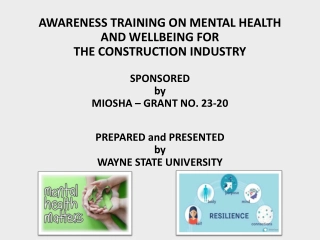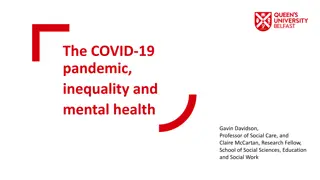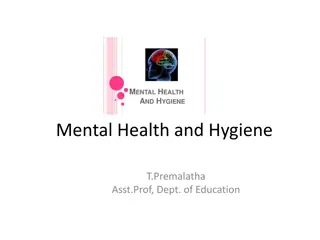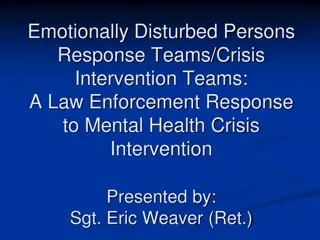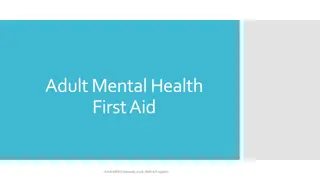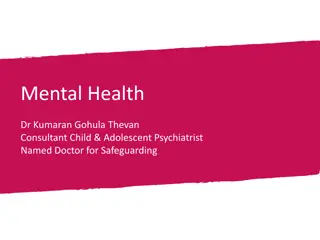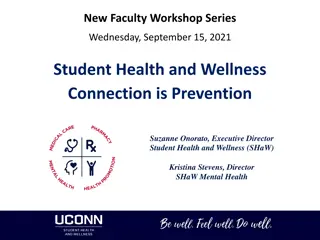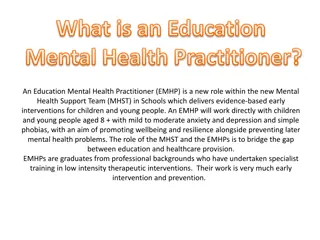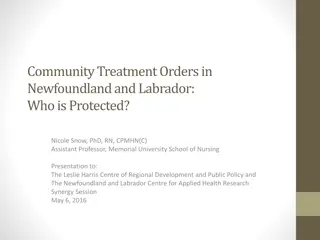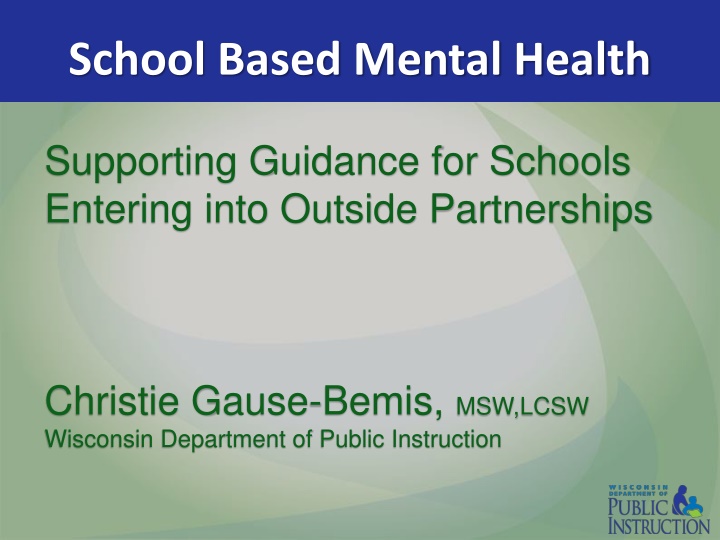
Effective Strategies for School-Based Mental Health Support
Learn about core elements of a comprehensive school-based mental health program, the importance of community partnerships, and the benefits of having mental health providers in schools to support student well-being and academic success.
Download Presentation

Please find below an Image/Link to download the presentation.
The content on the website is provided AS IS for your information and personal use only. It may not be sold, licensed, or shared on other websites without obtaining consent from the author. If you encounter any issues during the download, it is possible that the publisher has removed the file from their server.
You are allowed to download the files provided on this website for personal or commercial use, subject to the condition that they are used lawfully. All files are the property of their respective owners.
The content on the website is provided AS IS for your information and personal use only. It may not be sold, licensed, or shared on other websites without obtaining consent from the author.
E N D
Presentation Transcript
School Based Mental Health Supporting Guidance for Schools Entering into Outside Partnerships Christie Gause-Bemis, MSW,LCSW Wisconsin Department of Public Instruction
Objectives What is possible .? Memorandum of Understanding Guidance Referral Pathways Guidance on Community Partnerships
core elements of a full continuum of high quality, evidence- based mental health programming in schools, which includes mental health promotion, prevention, early identification and intervention, crisis intervention, teacher consultation, school staff professional development and resource sharing. Community .based school mental health programs expand on or augment services that already exist in schools for example, the work of school psychologists, social workers, counselors, and educators that focuses on assessing and improving children s emotional and behavioral functioning.
Expanded school mental health programs offer the opportunity for community and school staff to come together in improving success for all students.
Mental Health in Youth 1 in 5 dealing with a mental health issue 20% of students need mental health intervention Only 30 % of those who need it will get any assistance. The majority of mental illnesses emerge in childhood, yet fewer than half of children who suffer from mental illness receive treatment. An estimated 70% of youth have experienced some form of trauma
What is Possible? Beyond the send and fix Anti-stigma of mental health Wellness plans for all
Benefits of Community Mental Health Providers in Schools Increased access to care Increase time in the classroom Deepen the collaboration schools and providers School as the community for parents Impact on grades, attendance and behavior
Referrals to Community Providers
Components of an MOU What are the goals of collaboration and outcomes? Any special training? Communication? Crisis? Contact person at the school? Confidential environment for service delivery?
Components of an MOU, cont. Data collection? Follow up communication? Communication of availability of services to parents and youth and staff? Releases and informed consent? Meeting the needs? Any school policies or procedures communicated to providers?
Components of an MOU, cont. Agreements on space, equipment, supplies or other costs Summer months? Records kept?
Referral Pathways Define roles and responsibilities Clarify the process to manage referrals Share information efficiently Monitor efficacy of Evidence Based Interventions Make decisions on level of intervention, modality collaboratively Engage Youth voice and family
Resources ToolKit-ReferralPathways.pdf DPI MOU Guidance and Referral Pathways Guidance: http://dpi.wi.gov/sites/default/files/imc e/sspw/pdf/mhmouguidancedoc.pdf

